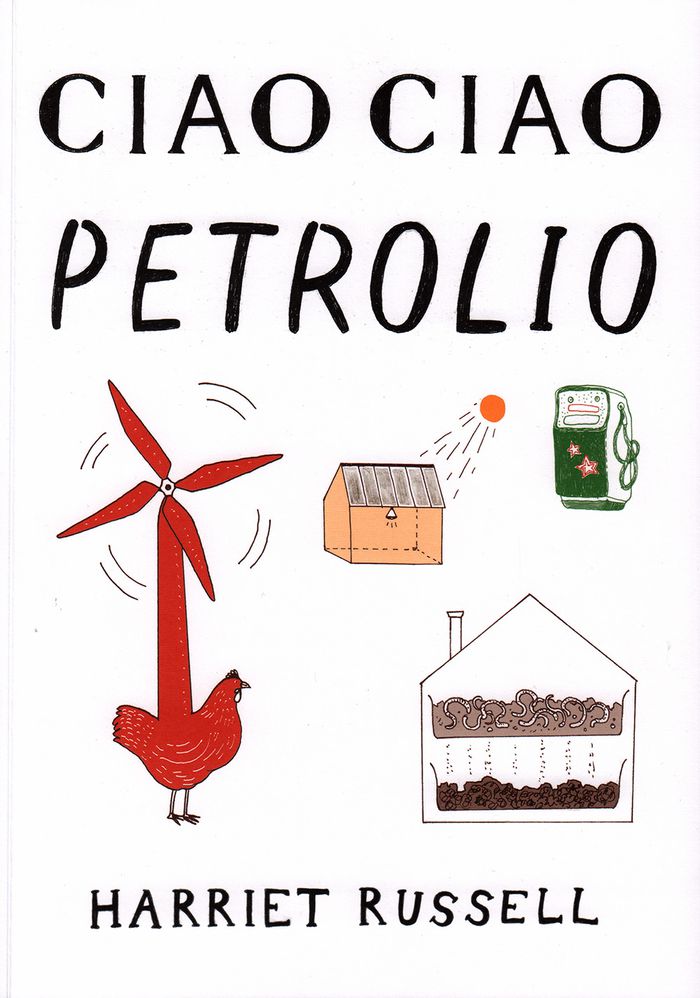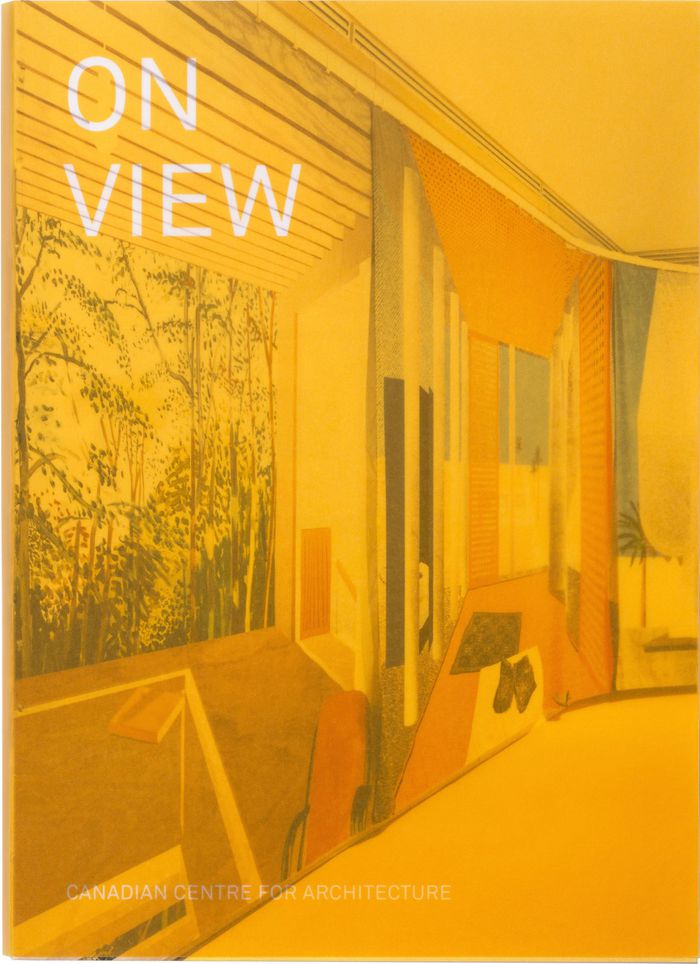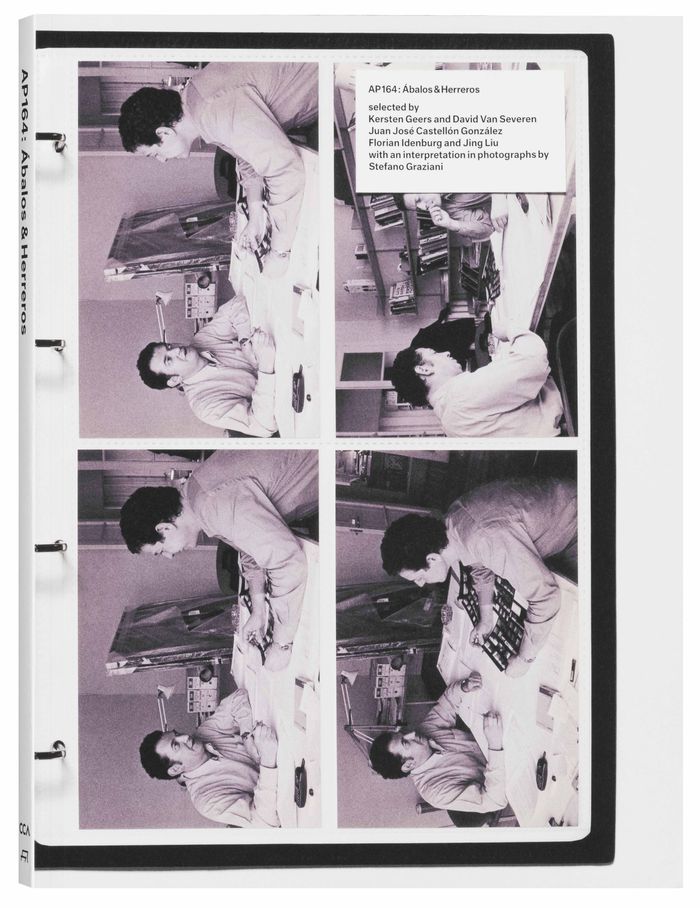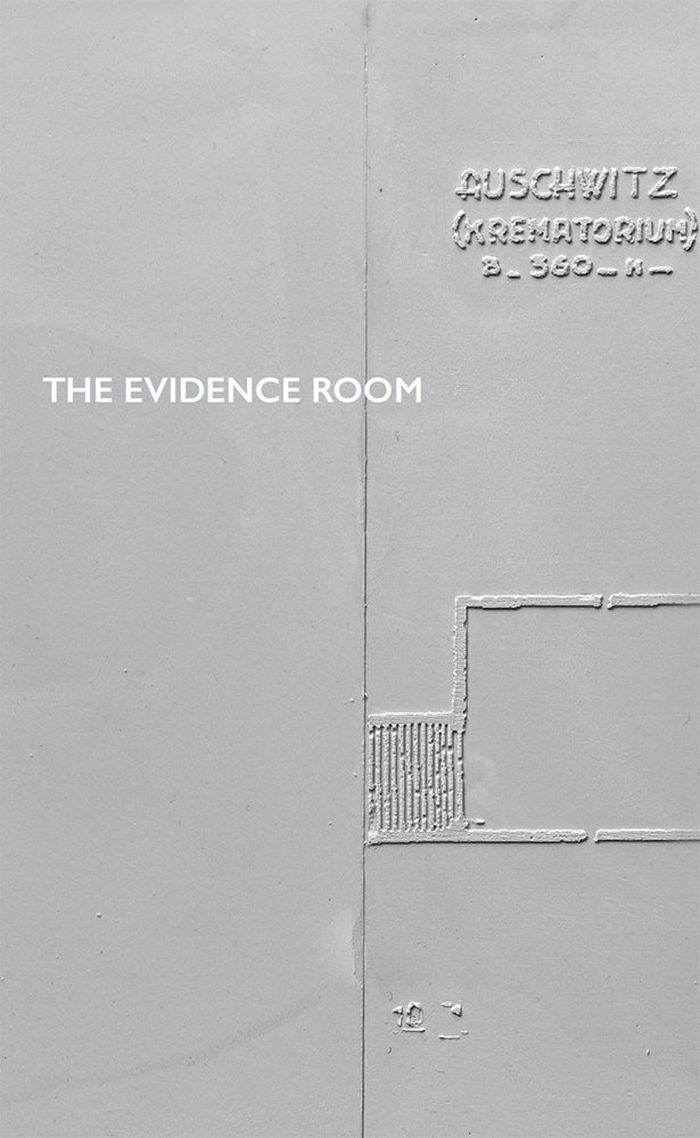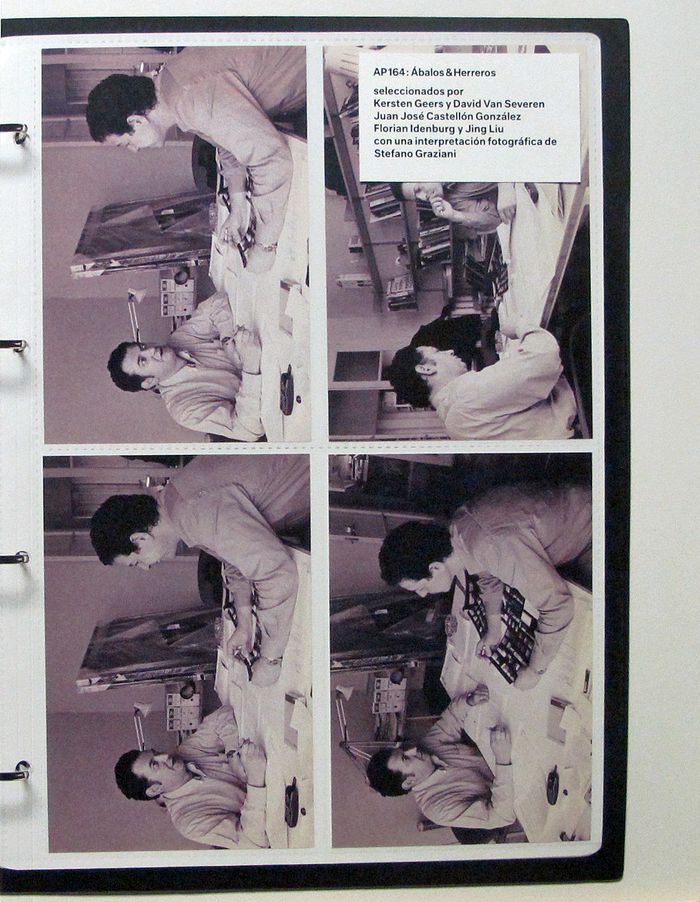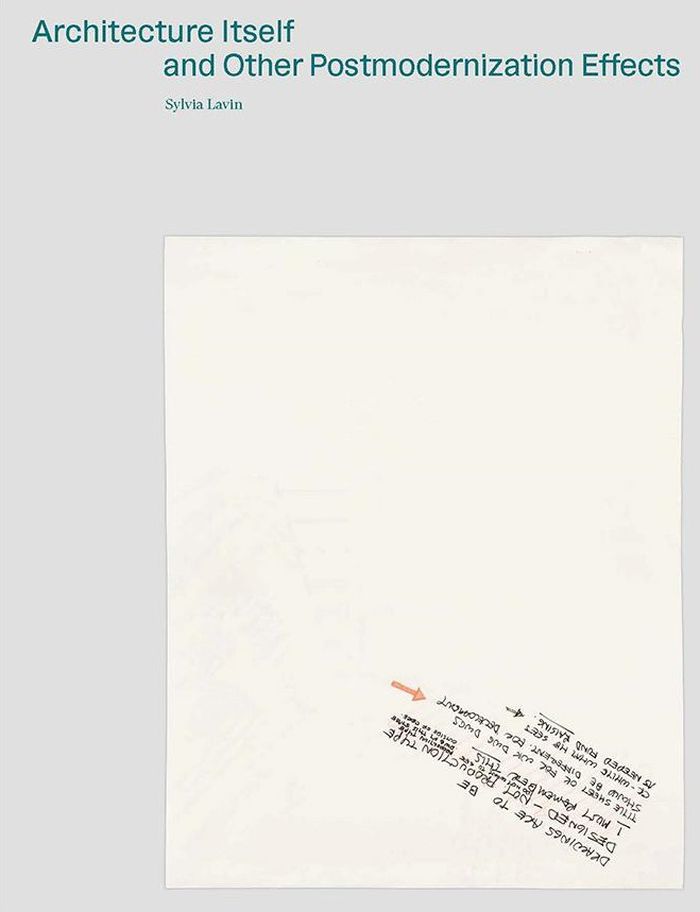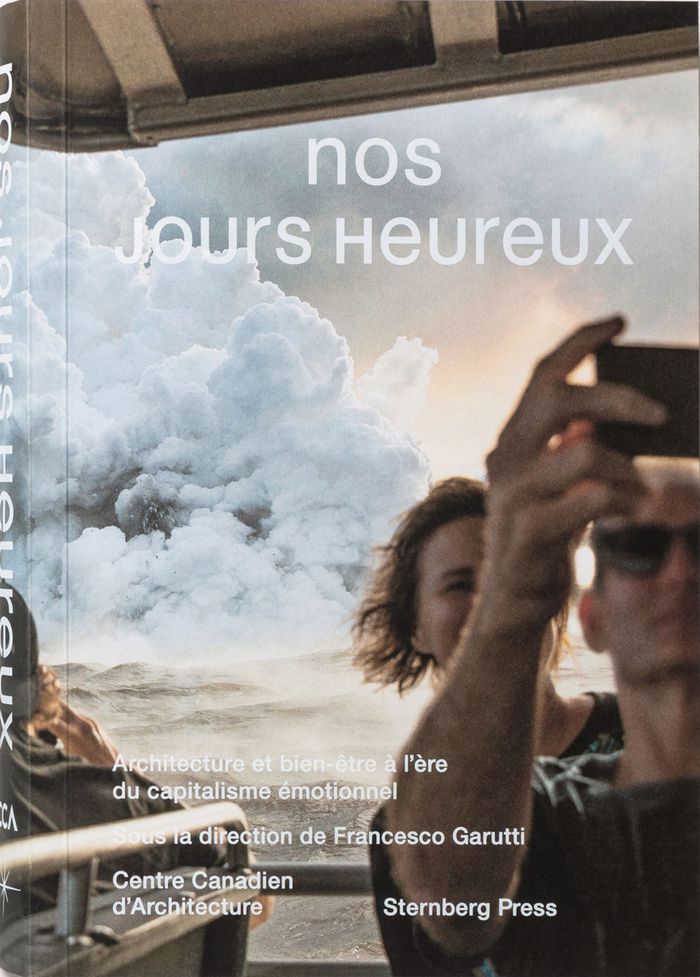Ciao ciao petrolio
$19.00
(available to order)
Summary:
Tags: Libri per Bambini Illustrati Il petrolio, si sa, è una risorsa non rinnovabile. Ma da dove viene? Come si produce? E se dovesse finire? Ciao ciao petrolio è l’ultimo libro illustrato di Harriet Russell e presenta la questione del risparmio energetico e delle fonti rinnovabili al pubblico dei bambini. Dalla raccolta differenziata all’isolamento termico, dal(...)
Ciao ciao petrolio
Actions:
Price:
$19.00
(available to order)
Summary:
Tags: Libri per Bambini Illustrati Il petrolio, si sa, è una risorsa non rinnovabile. Ma da dove viene? Come si produce? E se dovesse finire? Ciao ciao petrolio è l’ultimo libro illustrato di Harriet Russell e presenta la questione del risparmio energetico e delle fonti rinnovabili al pubblico dei bambini. Dalla raccolta differenziata all’isolamento termico, dal riciclo alla riduzione dell’inquinamento; la Russell ci racconta che non è vero che non si può cambiare il mondo, perché ognuno nel suo piccolo può fare la differenza. Un modo per parlare anche ai più piccoli di sostenibilità e delle problematiche ambientali di oggi, in maniera semplice e ironica, per crescere generazioni più consapevoli che abbiano a cuore il destino di questo pianeta. Una precedente versione di questo racconto è stata pubblicata con il titolo "An endagered species" in Sorry, out of gas: Architecture's Response to the 1973 Oil Crisis – pubblicato da CCA e Corraini Edizioni nel 2007. destino di questo pianeta.
CCA Publications
CCA on view
$10.95
(available in store)
Summary:
"CCA on View" is a visual guidebook to the exhibitions produced by the Canadian Centre for Architecture since its founding in 1979. From "The Preservation and Conservation of Prints and Drawings of Ernest Cormier (1885–1980)", mounted in the lobby of the Canadian Centre for Architecture’s first office space in 1982, to" Besides, History", exhibited in 2017 in the main(...)
CCA on view
Actions:
Price:
$10.95
(available in store)
Summary:
"CCA on View" is a visual guidebook to the exhibitions produced by the Canadian Centre for Architecture since its founding in 1979. From "The Preservation and Conservation of Prints and Drawings of Ernest Cormier (1885–1980)", mounted in the lobby of the Canadian Centre for Architecture’s first office space in 1982, to" Besides, History", exhibited in 2017 in the main galleries of the CCA’s current building at 1920, rue Baile, each exhibition is presented through installation views, photographs of exhibition objects, previously unpublished working documents, and short descriptive statements. These artifacts, interspersed with commentary from CCA directors, curators, and collaborators, illustrate the central positions and arguments taken up in each project. "CCA on View" delves into the institutional archives to highlight the character and trajectory of the CCA’s approach to curatorial research.
CCA Publications
CCA à l'affiche
$10.95
(available in store)
Summary:
« CCA à l’affiche » est un guide visuel des expositions produites par le Centre Canadien d’Architecture depuis sa fondation en 1979. De « La préservation et conservation des dessins et estampes d’Ernest Cormier (1885-1990) », installé dans le hall des premiers bureaux du CCA en 1982, à l’exposition « L’histoire, par ailleurs » présentée dans les salles principales du(...)
CCA à l'affiche
Actions:
Price:
$10.95
(available in store)
Summary:
« CCA à l’affiche » est un guide visuel des expositions produites par le Centre Canadien d’Architecture depuis sa fondation en 1979. De « La préservation et conservation des dessins et estampes d’Ernest Cormier (1885-1990) », installé dans le hall des premiers bureaux du CCA en 1982, à l’exposition « L’histoire, par ailleurs » présentée dans les salles principales du bâtiment de la rue Baile en 2017 – chaque projet est décrit brièvement et présenté à travers des vues d’installation, des photographies d’objets exposés et des documents de travail jusqu’alors inédits. Ces artéfacts, intercalés d’interjections par des directeurs, curateurs et collaborateurs du CCA, illustrent le propos développé dans chaque projet. « CCA à l’affiche » plonge dans les archives institutionnelles du CCA pour mettre en lumière le caractère et la trajectoire de sa démarche curatoriale au fil du temps.
CCA Publications
books
$35.00
(available in store)
Summary:
Japanese version
Besides, history (Japanese edition) Go Hasegawa, Kersten Geers, David Van Severen.
Actions:
Price:
$35.00
(available in store)
Summary:
Japanese version
books
July 2018
CCA Publications
$45.00
(available in store)
Summary:
Iñaki Ábalos and Juan Herreros established the renowned architectural firm Ábalos & Herreros in Madrid in 1984. At the time, following the end of the Franco regime, architects were valued more for their technical ability than for their contributions to theoretical research. In this context, Ábalos and Herreros’s melding of design with a range of publications and(...)
AP164: Ábalos & Herreros. Selected by OFFICE, Juan José Castellon and SO-IL
Actions:
Price:
$45.00
(available in store)
Summary:
Iñaki Ábalos and Juan Herreros established the renowned architectural firm Ábalos & Herreros in Madrid in 1984. At the time, following the end of the Franco regime, architects were valued more for their technical ability than for their contributions to theoretical research. In this context, Ábalos and Herreros’s melding of design with a range of publications and curatorial projects presented a remarkable challenge to assumptions about the role of an architect. In 2012, the Canadian Centre for Architecture obtained the Ábalos & Herreros archive, which contains documents related to more than 160 projects. The material comprises sketches, slides, models, collages, and drawings. The archive presents a compelling opportunity to reconstruct Ábalos and Herreros’s planning and design process. Each of the book’s three contributors—two of whom worked with Ábalos and Herreros—approaches the archive with specific questions, and their essays explore topics including the architects’ fascination with industrial architecture, their capacity to construct a hybrid materiality without recourse to building technology as language, and their innovative visions for landscape architecture.
CCA Publications
The evidence room
$40.95
(available in store)
Summary:
Internationally renowned and award-winning historian Dr. Robert Jan van Pelt's 'The Evidence Room' is a chilling exploration of the role architecture played in constructing Auschwitz-arguably the Nazis' most horrifying facility. 'The Evidence Room' is both a companion piece to, and an elaboration of, the upcoming exhibit at the 2016 Venice Architecture Biennale and at the(...)
June 2016
The evidence room
Actions:
Price:
$40.95
(available in store)
Summary:
Internationally renowned and award-winning historian Dr. Robert Jan van Pelt's 'The Evidence Room' is a chilling exploration of the role architecture played in constructing Auschwitz-arguably the Nazis' most horrifying facility. 'The Evidence Room' is both a companion piece to, and an elaboration of, the upcoming exhibit at the 2016 Venice Architecture Biennale and at the Canadian Center for Architecture, based on van Pelt's authoritative testimony against Holocaust denial in a 2000 libel suit argued before the Royal Courts of Justice in London.
$45.00
(available in store)
Summary:
Iñaki Ábalos and Juan Herreros established the renowned architectural firm Ábalos & Herreros in Madrid in 1984. At the time, following the end of the Franco regime, architects were valued more for their technical ability than for their contributions to theoretical research. In this context, Ábalos and Herreros’s melding of design with a range of publications and(...)
AP164: Ábalos & Herreros (spanish version)
Actions:
Price:
$45.00
(available in store)
Summary:
Iñaki Ábalos and Juan Herreros established the renowned architectural firm Ábalos & Herreros in Madrid in 1984. At the time, following the end of the Franco regime, architects were valued more for their technical ability than for their contributions to theoretical research. In this context, Ábalos and Herreros’s melding of design with a range of publications and curatorial projects presented a remarkable challenge to assumptions about the role of an architect. In 2012, the Canadian Centre for Architecture obtained the Ábalos & Herreros archive, which contains documents related to more than 160 projects. The material comprises sketches, slides, models, collages, and drawings. The archive presents a compelling opportunity to reconstruct Ábalos and Herreros’s planning and design process. Each of the book’s three contributors—two of whom worked with Ábalos and Herreros—approaches the archive with specific questions, and their essays explore topics including the architects’ fascination with industrial architecture, their capacity to construct a hybrid materiality without recourse to building technology as language, and their innovative visions for landscape architecture. Texto en español / text in spanish
CCA Publications
$48.00
(available in store)
Summary:
Before architectural postmodernism was named as such, the process of postmodernizing architecture had already begun implicating architectural work in the increasingly information-driven logic of the late twentieth century. Though radical, the effects of this process have long been excluded from the predominant histories of postmodernism, which continue to rely on notions(...)
Architecture itself and other postmodernization effects
Actions:
Price:
$48.00
(available in store)
Summary:
Before architectural postmodernism was named as such, the process of postmodernizing architecture had already begun implicating architectural work in the increasingly information-driven logic of the late twentieth century. Though radical, the effects of this process have long been excluded from the predominant histories of postmodernism, which continue to rely on notions of individual and creative genius, architectural autonomy, and stylistic genealogies. Architecture Itself and Other Postmodernization Effects places material devices, such as Pantone chips, research grant applications, questionnaires, Xerography, and travel photography, at the forefront of a counter-narrative that recasts these informatic procedures as fundamentally architectural and as the primary of catalysts of the loose agglomeration of styles that was once called postmodernism.
CCA Publications
$50.00
(available to order)
Summary:
How do we design our cities when our most intimate experiences are incessantly tracked and our feelings become the base of new modes of production that prioritize the immaterial over the material? Since the 2008 financial crisis, lists of well-being indicators, happiness indexes, and quality-of-life rankings have become viral. Concurrently, the emotional data presented in(...)
Our happy life: architecture and well-being in the age of emotional capitalism
Actions:
Price:
$50.00
(available to order)
Summary:
How do we design our cities when our most intimate experiences are incessantly tracked and our feelings become the base of new modes of production that prioritize the immaterial over the material? Since the 2008 financial crisis, lists of well-being indicators, happiness indexes, and quality-of-life rankings have become viral. Concurrently, the emotional data presented in these surveys- including perceptions on questions such as loneliness, friendship and intimate fears- feed an expanding political agenda of happiness and a new form of market whose most decisive asset is "affect." 'Our Happy Life' investigates the architectural implications of this trend by dissecting and questioning the political, economic, and emotional conditions that generate space today. Organized as a visual narrative with critical readings by Will Davies, Daniel Fujiwara, Simon Fujiwara, Ingo Niermann, Deane Simpson, and Mirko Zardini, this book reveals architecture, city, and landscape as contested surfaces, caught between the intagible guidelines of happiness indexes, the new marketplace of emotions, and the relentless ideology of positivity.
CCA Publications
$50.00
(available to order)
Summary:
Comment concevoir la ville lorsque nos expériences les plus intimes sont constamment traquées et nos sentiments utilisés comme base à de nouveaux modes de production favorisant l’immatériel au détriment du matériel ? Depuis la crise financière de 2008, les listes d’indicateurs du bien-être et d’indices du bonheur, ainsi que les classements fondés sur la qualité de vie,(...)
Nos jours heureux : architecture et bien-être à l'ère du capitalisme émotionnel
Actions:
Price:
$50.00
(available to order)
Summary:
Comment concevoir la ville lorsque nos expériences les plus intimes sont constamment traquées et nos sentiments utilisés comme base à de nouveaux modes de production favorisant l’immatériel au détriment du matériel ? Depuis la crise financière de 2008, les listes d’indicateurs du bien-être et d’indices du bonheur, ainsi que les classements fondés sur la qualité de vie, circulent de manière virale. Parallèlement, les données émotionnelles présentées dans ces enquêtes, y compris les perceptions relatives aux notions de solitude, d’amitié et de peurs intimes, alimentent un agenda politique du bonheur en croissance et une nouvelle forme de marché dont l’atout le plus déterminant est l’« affect ». Nos jours heureux examine les implications architecturales de cette tendance en disséquant et en questionnant les conditions politiques, économiques et émotionnelles qui génèrent l’espace aujourd’hui. Structuré comme une narration visuelle – assortie de lectures critiques de William Davies, Daniel Fujiwara, Simon Fujiwara, Ingo Niermann, Deane Simpson et Mirko Zardini –, cet ouvrage présente l’architecture, la ville et le paysage comme des surfaces contestées, prises entre les lignes directrices intangibles des indices de bonheur, le nouveau marché des émotions et l’idéologie implacable de la positivité.
CCA Publications
